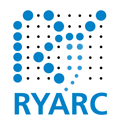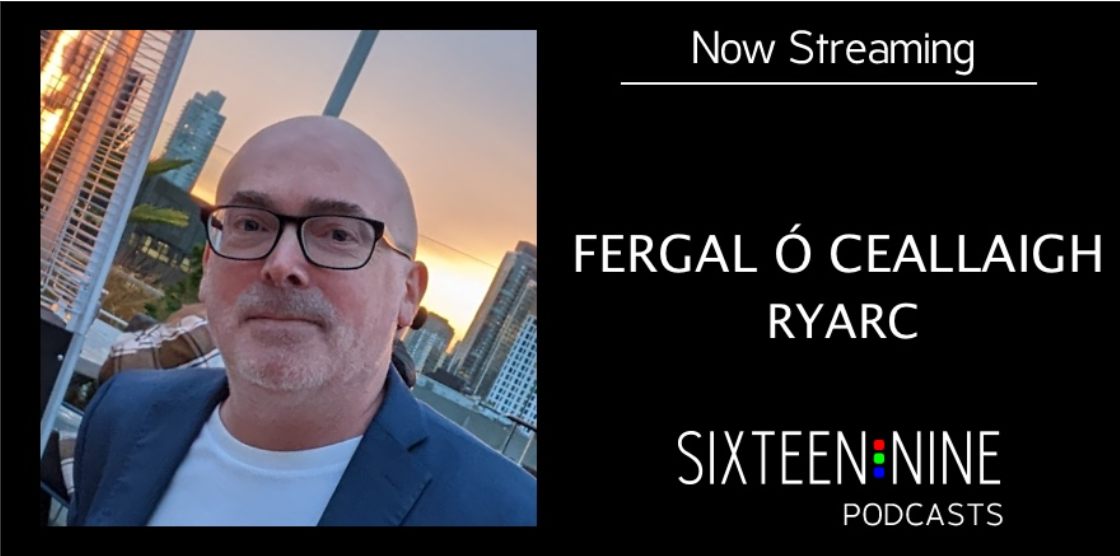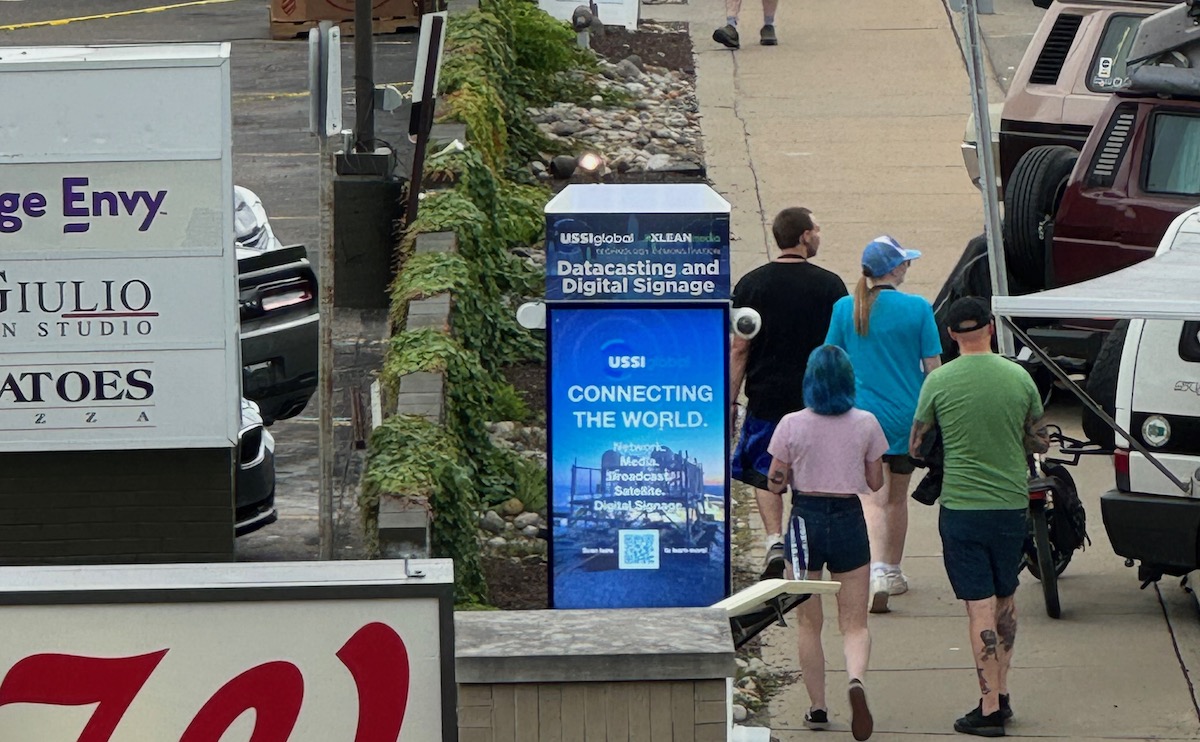FERGAL Ó CEALLAIGH กล่าวถึงประวัติศาสตร์อันยาวนานและลึกลับของ RYARC และแรงผลักดันในการใช้เทคโนโลยีเครื่องส่งสัญญาณทีวีสำหรับป้ายดิจิทัล
9 กรกฎาคม 2024 โดย Dave Haynes
ฉันรู้จักบริษัทซอฟต์แวร์ป้ายดิจิทัลของออสเตรเลียที่ชื่อว่า ไรอาร์คแต่ตลอดหลายปีที่ผ่านมา – และบางทีอาจเป็นเพราะระยะทางที่ห่างไกล – ฉันไม่เคยพบหรือพูดคุยกับผู้ก่อตั้งและซีอีโอเลย เฟอร์กัล โอ ซีลลีย์
เป็นบริษัทเรือดำน้ำประเภทหนึ่งที่ดำเนินงานใต้แนวน้ำและส่วนใหญ่อยู่นอกสายตา แต่ Ryarc ดำเนินกิจการมาเป็นเวลานานหลายปีแล้ว และประสบความสำเร็จแม้จะยอมรับว่ามีข้อบกพร่องทางการตลาด เนื่องจากซอฟต์แวร์เน้นที่เนื้อหามากกว่าความน่าสนใจ ซึ่งสิ่งนี้ดึงดูดใจบุคลากรด้านไอทีที่เข้ามาเกี่ยวข้องกับโครงการขนาดหน้าจอใหญ่ในปัจจุบันมากขึ้นเรื่อยๆ
ฉันนึกถึง Ryarc ในงาน InfoComm เมื่อเพื่อนในอุตสาหกรรมคนหนึ่งเอ่ยถึงเทคโนโลยีที่เขาพบในงานเสวนา ซึ่งสามารถใช้เทคโนโลยีการออกอากาศเพื่อย้ายเนื้อหาป้ายดิจิทัลแทนอินเทอร์เน็ตบรอดแบนด์หรือ เครือข่ายข้อมูลมือถือ
ฟังดูน่าสนใจ และฉันต้องการทราบข้อมูลเพิ่มเติม เนื่องจากฟังดูเหมือนการกระจายเนื้อหาผ่านดาวเทียม แต่แตกต่างกัน เมื่อฉันพบว่า Ryarc เป็นบริษัทที่ทำการทดลองแนวคิดพิสูจน์ในสหรัฐอเมริกา ฉันจึงติดต่อ Fergal ซึ่งปัจจุบันอยู่ที่ซีแอตเทิล และเราได้พูดคุยกันเรื่องนี้
เฟอร์กัล ขอบคุณที่มาร่วมรายการกับฉัน ฉันรู้จักบริษัทของคุณมานานแล้ว แต่เราไม่เคยคุยกันจริงๆ สำหรับคนที่ไม่รู้ว่าคุณทำอะไร บริษัททำอะไร คุณช่วยแนะนำฉันหน่อยได้ไหม
เฟอร์กัล โอ ซีลลีย์: ขอบคุณที่เชิญฉันมา RYARC ก่อตั้งขึ้นในฐานะแอปพลิเคชันป้ายดิจิทัล โดยเริ่มจากความต้องการแพลตฟอร์มป้ายดิจิทัลที่ผสมผสานความสามารถขององค์กรเข้ากับทักษะระดับผู้ปฏิบัติงานที่มีความรู้ ดังนั้น นี่จึงอยู่ในยุคที่ป้ายดิจิทัลกำลังเปลี่ยนจากสิ่งที่เป็นงานเฉพาะทางและค่อนข้างหายาก ไปสู่สิ่งที่อย่างน้อยจากมุมมองของเรา ความต้องการก็คือป้ายดิจิทัลจะเป็นเพียงเครื่องมืออีกชิ้นหนึ่งในคลังอาวุธขององค์กร และด้วยเหตุนี้ จึงต้องใช้ทีมงานเฉพาะทางในการดำเนินงานในระดับผู้ปฏิบัติงานที่มีความรู้มากกว่าที่จะเป็นทีมงานเฉพาะทาง
เรื่องนี้ย้อนกลับไปได้ 20 ปีใช่ไหม?
เฟอร์กัล โอ ซีลลีย์: ใช่แล้ว เราลองย้อนกลับไปที่เรื่องราวในอดีตของฉันบ้าง ฉันเคยทำงานให้กับ Microsoft ในช่วงยุค 90 ที่เมืองดับลิน และมีช่วงเวลาที่ยอดเยี่ยมมากที่นั่น
ไมโครซอฟต์เป็นบริษัทที่เปิดตัว Nvidia ในยุคนั้น Windows 95 ดังนั้นจึงเป็นสถานที่ทำงานที่ยอดเยี่ยมมาก และผมไม่สามารถขอจุดเริ่มต้นที่ดีกว่านี้ในอาชีพการงานของผมได้ แต่ผมรู้สึกกระสับกระส่ายที่จะพยายามเริ่มต้นบางอย่างของตัวเอง และผมก็ได้เจอกับป้ายดิจิทัล ผมมองเห็นแนวโน้มของการเชื่อมต่อได้ หากคุณรวมการเชื่อมต่อ ความพร้อมใช้งาน และต้นทุนเข้าด้วยกัน รวมถึงการแสดงผล ความพร้อมใช้งาน และต้นทุน เส้นสองเส้นบนกราฟจะเลื่อนลง และทางด้านขวาและแรงงานคนจะเพิ่มขึ้น และทางด้านขวา ดังนั้นปัจจัยทั้งสามนี้จึงรวมกันทำให้ผมเห็นได้ชัดเจนว่าป้ายดิจิทัลกำลังจะกลายมาเป็นสิ่งสำคัญ
ถ้าจะให้เกิดสิ่งนี้ขึ้น ต้องมีซอฟต์แวร์มาช่วยด้วย ฉันจึงลาออกจาก Microsoft แล้วทำ Asian Odyssey Backpack และเขียนโค้ดสำหรับเวอร์ชัน 1 จริงๆ แล้ว ฉันเบื่อกับการนั่งเล่นบนชายหาดในประเทศไทยมาก จนต้องหันมาเขียนโค้ดจริงๆ แทน ฉันพูดจริงนะ
นั่นมันผิดปกติ
เฟอร์กัล โอ ซีลลีย์: ฉันเดานะ ใช่ มันพิเศษมาก ฉันไม่ใช่คนชอบชายหาด ซึ่งนั่นก็เป็นอีกเรื่องแปลกสำหรับคนที่ไปซิดนีย์มาเป็นเวลานาน แต่ใช่แล้ว ฉันก็เลยอยากลองทำแบบนั้นดู
เมื่อออกจาก Microsoft ฉันรู้สึกว่าตัวเองเข้าใจเรื่องการใช้งานได้ดีและรู้ว่าผลิตภัณฑ์ซอฟต์แวร์ระดับ Knowledge Worker ต้องใช้อะไรบ้าง ซึ่งฉันหมายถึงผลิตภัณฑ์ที่กลายมาเป็นผลิตภัณฑ์นั้น สำหรับฉันแล้ว ดูเหมือนว่าป้ายดิจิทัลจะเป็นสิ่งที่สำคัญมากขึ้น และด้วยเหตุนี้ จึงจำเป็นต้องเป็นแอปประเภทเพิ่มผลผลิตมากกว่าที่จะเป็นแอปเฉพาะทางที่ต้องใช้วิศวกรด้านระบบออกอากาศ ฉันคิดว่าซอฟต์แวร์รุ่นแรกๆ ที่มีจำหน่ายนั้นมาจากระบบออกอากาศ ถ้าฉันจำไม่ผิด ฉันคิดว่านั่นคือเบื้องหลังของ Scala
ฉันจึงได้ครอบครองหนึ่งในนั้นมาได้ ฉันจำไม่ได้แน่ชัดว่าเป็นปีใด แต่ฉันคิดว่า โอเค ฉันพอจะเข้าใจแล้วว่ามันทำงานยังไง แต่คุณจะมอบสิ่งนี้ให้กับโจในฝ่ายการตลาดและขอให้เขาเริ่มดำเนินการไม่ได้ นั่นจึงเป็นที่มาของเหตุผลที่ฉันเลือกเส้นทางนั้นโดยเฉพาะ และเหตุผลที่ฉันเริ่มเขียนโค้ดเพื่อไปถึงจุดนั้น แต่ใช้เวลาหลายปีตั้งแต่สร้างสิ่งนั้นในอพาร์ตเมนต์ของฉันไปจนถึงการเปิดตัวบริษัทจริงๆ
ธุรกิจเริ่มต้นเมื่อไหร่ เช่น ตอนที่คุณออกไปขายใบอนุญาตและทุกสิ่งทุกอย่าง?
เฟอร์กัล โอ ซีลลีย์: ฉันคิดว่าใบอนุญาตแรกที่เราขายน่าจะเป็นเมื่อปี 2549 แต่ฉันทำแบบเต็มเวลาได้ประมาณสองปีก่อนหน้านั้น
คุณคงมีความสุขดีที่จะเริ่มขายแล้ว
เฟอร์กัล โอ ซีลลีย์: โอ้ ฉันเคยเป็นแบบนั้น แต่ตลกดีนะ ฉันทำงานให้กับบริษัทแห่งหนึ่งที่ Match.com ซื้อไปในซิดนีย์ และที่นั่นก็เป็นสถานที่ทำงานที่น่าสนใจสำหรับฉันในวัยเดียวกับฉันในตอนนั้น
แต่แล้วฉันก็ได้พบกับคนบางคนที่นั่น ซึ่งเป็นคนร่ำรวยอิสระ และสุภาพบุรุษที่ฉันเข้าไปหาชื่อ Neil Gamble เขาเป็นที่รู้จักกันดีในแวดวงธุรกิจของออสเตรเลีย เขาเป็นคนแอฟริกาใต้ เป็นคนน่ารัก แต่เขาเป็นนักธุรกิจที่จริงจังและบริหารบริษัทซอฟต์แวร์ที่ใหญ่ที่สุดแห่งหนึ่งในออสเตรเลีย เช่นเดียวกับเมื่อก่อน เขาเป็นประธานบริษัทที่ฉันทำงานอยู่ ซึ่งถูก Match เข้าซื้อกิจการ และฉันก็เสนอไอเดียของฉันให้เขาฟัง ฉันไปที่ห้องประชุมของบริษัทซอฟต์แวร์ขนาดใหญ่แห่งนี้ในเวลาเจ็ดโมงเช้าที่ซิดนีย์ ดังนั้นฉันคิดว่าน่าจะเป็นปี 2003 หรืออาจเป็นปี 2004 ไม่สำคัญหรอก แต่ฉันเสนอไอเดียให้เขาฟัง และเขาก็บอกว่า "Fergal เจ๋งมาก แต่ช่างเถอะ กลับมาอีกเมื่อคุณมีลูกค้าแล้ว"
ฉันจึงเลิกยุ่งและคิดว่าเขาคงคิดเรื่องนี้อยู่พักหนึ่งแล้วกลับมาหาฉันอีกครั้งสองสามเดือนต่อมา ตอนนั้นฉันยังทำงานเป็นผู้รับเหมาอยู่ ดังนั้นฉันจึงสบายดี เขาบอกว่า “รู้ไหม ฉันเคยเจอคนอื่นที่ทำบางอย่างในพื้นที่ขายปลีก และสิ่งที่คุณพูดก็น่าสนใจยิ่งขึ้นไปอีก ดังนั้นฉันจะลองเสี่ยงดู” แล้วเขาก็ใส่เงินเพียงพอที่จะจ่ายให้ฉันและชายหนุ่มคนอื่นๆ นำโค้ดจากสิ่งที่ฉันทำได้มาสาธิตให้เราเห็นบางอย่างที่เราสามารถขายได้จริง และลูกค้ารายแรกก็คือ Zimmer คุณเคยได้ยินชื่อ Zimmer Frame ไหม?
เลขที่
เฟอร์กัล โอ ซีลลีย์: โครงไม้ค้ำยันก็คล้ายๆ กับโครงไม้ค้ำยัน เป็นเครื่องมือช่วยเดินสำหรับผู้สูงอายุทั่วไป คล้ายๆ กับโครงค้ำยัน
น่าเสียดาย ฉันอาจจะได้เรียนรู้เกี่ยวกับเรื่องนั้นเร็ว ๆ นี้ แต่ยังไม่ใช่ตอนนี้
เฟอร์กัล โอ ซีลลีย์: ยังไม่ถึงเวลา อาจจะอีกหลายปี แต่เราสร้างเว็บไซต์ขึ้นมา และนั่นก็เป็นเว็บไซต์แรก จากนั้นสื่อโฆษณานอกบ้านก็เริ่มได้รับความนิยมในออสเตรเลีย และมีอัตราการเติบโตที่ดีเมื่อเทียบกับตลาดอื่นๆ และนีลก็มีเครือข่ายที่ดีในวงการธุรกิจของซิดนีย์
เขาเริ่มเปิดประตูสู่สถานที่ต่างๆ เช่น ตอนนี้ฉันสามารถพบปะผู้คนได้แล้ว และจากประสบการณ์ของฉันเกี่ยวกับเรื่องนั้น และอีกครั้ง บางทีสิ่งนี้อาจสะท้อนอยู่ในเว็บไซต์ของเราและโปรไฟล์ทั่วไปของเราโดยทั่วไป ฉันพบว่า หากฉันสามารถไปพบลูกค้าและแสดงผลิตภัณฑ์ให้พวกเขาเห็น เราก็มักจะทำได้ดี ส่วนที่ยากกว่าสำหรับเราคือการเข้าถึงลูกค้า แต่ Neil มีส่วนสำคัญมากในเรื่องนั้น และนั่นคือจุดเริ่มต้นของเรา
เมื่อก่อนมันยากสำหรับทุกคน
เฟอร์กัล โอ ซีลลีย์: ใช่แล้ว ตอนนั้นผมมีพื้นฐานทางวิศวกรรม ผมคิดว่าเรื่องนี้ค่อนข้างน่าสนใจทีเดียว ในยุคนั้น คุณมีนักโฆษณาที่อยู่ในธุรกิจป้ายโฆษณา และจู่ๆ ก็มีความต้องการที่จะเปลี่ยนแปลงตัวเองให้เป็นบริษัทไอที ซึ่งทำให้เกิดปัญหาเฉพาะตัวขึ้น ผมคิดว่าในตอนนั้น มีบริษัทที่มีประสบการณ์และปฏิสัมพันธ์กับไอทีในเรื่อง "การซ่อมเครื่องพิมพ์" และ "ทำไมอีเมลของฉันถึงใช้ไม่ได้" ดังนั้น บริษัทเหล่านี้จึงไม่ใช่บริษัทเทคโนโลยีในสายเลือดของพวกเขา แต่เป็นบริษัทการตลาด และผมมักจะคิดว่าปีเหล่านั้นเป็นเหมือนยุคคาวบอย ซึ่งหมายความว่ามีแพลตฟอร์มมากมายอยู่ที่นั่น
สิ่งที่ฉันมักจะเห็น แม้ว่าจะไม่ได้เป็นแบบนั้นเสมอไป ก็คือ หลายครั้ง ผู้มีอำนาจตัดสินใจไม่มีแผนกไอทีที่เป็นผู้ใหญ่ในบริษัท จึงไม่ใช่เรื่องปกติสำหรับพวกเขา นี่ไม่ใช่ส่วนสำคัญของธุรกิจของพวกเขาเหมือนในปัจจุบัน มักมีคนจำนวนมากที่ตัดสินใจเกี่ยวกับซอฟต์แวร์โดยที่ไม่มีประสบการณ์และความรู้เพียงพอที่จะประเมินซอฟต์แวร์และผลลัพธ์ที่ได้อย่างเหมาะสม และฉันคิดว่านี่เป็นส่วนหนึ่งที่ทำให้มีโซลูชันมากมายมหาศาล ซึ่งก็คือป้ายดิจิทัลนั้นค่อนข้างตรงไปตรงมาในการหาซอฟต์แวร์ที่สามารถส่งไฟล์แฟลช JPEG หรือวิดีโอจากจุด A ไปยังจุด B ได้อย่างน่าเชื่อถือ
และเมื่อการประเมินซอฟต์แวร์ดำเนินการโดยบุคคลที่ไม่มีประสบการณ์จริงในซอฟต์แวร์องค์กร การจัดการเอดจ์ หรือการจัดการอุปกรณ์ระยะไกล หรืออะไรทำนองนั้น ผู้ที่คิดแบบหลอกลวงก็สามารถทำได้อย่างรวดเร็ว เพราะไม่มีใครถามคำถามน่าเบื่อเกี่ยวกับระบบประปาเลย นั่นจึงเป็นสิ่งที่ต้องปรับตัวเล็กน้อยสำหรับฉันด้วยประสบการณ์ที่ผ่านมา
ฉันคิดว่านั่นอาจเป็นส่วนหนึ่งที่ทำให้สิ่งเหล่านี้แพร่หลายมากขึ้น ฉันไม่อยากดูถูกหรือดูถูกอุตสาหกรรมนี้หรืออะไรก็ตาม แต่มีโซลูชันมากมายที่ใครบางคนคิดขึ้นเพื่อตอบสนองคำขอของใครบางคน จากนั้นพวกเขาก็เสนอโลโก้และบอกว่าเราเป็นบริษัทป้ายดิจิทัล และบ่อยครั้งที่โซลูชันเหล่านี้ ถ้าคุณได้ลองมองดูเบื้องหลัง ให้ดูภายใต้ประทุน อย่างที่คนในอเมริกาเหนือพูดกัน คุณจะต้องตกใจกับสิ่งที่มีอยู่ที่นั่น และฉันมีประสบการณ์หลายครั้งในช่วงแรกๆ ที่เป็น Gesamt หรือใครสักคนที่ขายสินค้าได้ยอดเยี่ยม ซึ่งเป็นสิ่งที่ไม่มีใครกล่าวหาเราได้
ฉันคิดว่าพวกเขาไม่รู้ว่าตัวเองกำลังทำอะไรอยู่ ยังไงก็ตาม ฉันคิดว่าสถานการณ์น่าจะสงบลงบ้างแล้ว เพราะคุณต้องมีความยั่งยืน และในที่สุด หากของของคุณยังคงล้มอยู่เรื่อยๆ นั่นจะไม่คงอยู่ตลอดไป ด้วยคำโฆษณาที่ดีที่สุดในโลก
ใช่ ฉันคิดว่ามีบริษัทจำนวนมากที่เซ็นสัญญากับผู้ให้บริการซอฟต์แวร์แห่งหนึ่งเป็นเวลานานหลายปี และสามปีต่อมาก็ย้ายไปที่บริษัทอื่นหลังจากที่พวกเขาได้เรียนรู้สิ่งที่พวกเขาต้องการจริงๆ และเรียนรู้เกี่ยวกับสิ่งต่างๆ เช่น การจัดการอุปกรณ์ ความสามารถในการปรับขนาด และสิ่งอื่นๆ ทั้งหมดนั้น แต่ก่อนอื่นเลย พวกเขาถูกดึงดูดด้วยภาพที่สวยงามและ WYSIWYG UX และสิ่งอื่นๆ ทั้งหมดนั้น และในฐานะที่ปรึกษา ฉันได้เห็นด้วยตัวเองว่าสิ่งนี้ช่างน่าเบื่อและน่าเกลียด เหมือนกับ Subaru ขออภัย เจ้าของ Subaru แต่มันไม่ใช่รถที่เซ็กซี่ที่สุด แต่ใช้งานได้ดี เมื่อเทียบกับ Range Rover ที่ดูเซ็กซี่สุดๆ แต่จะกลายเป็นฝันร้าย
เฟอร์กัล โอ ซีลลีย์: ใช่แล้ว นั่นแหละ และผมเดาว่ามันเป็นสิ่งที่หลีกเลี่ยงไม่ได้ หากคุณพิจารณาปัจจัยที่ส่งผลต่อสิ่งนั้น คุณจะเห็นว่าอุตสาหกรรมนี้กำลังถูกดึง ถีบ และไหลบ่าเข้าสู่โลกของมัน และคุณจะมีคนจำนวนมากที่มองเห็นโอกาสและจำเป็นต้องดำเนินการอย่างรวดเร็ว แต่ผมไม่เชื่อเลยว่าบางสิ่งที่ผมเห็นจะผ่านการตรวจสอบ และผมก็เชื่อเช่นนั้น เพราะบางครั้งผมมองเข้าไปใต้ฝากระโปรงรถและพบว่ามันเหมือนกับพ่อมดแห่งออซ พวกเขากำลังดึงคันโยกอย่างบ้าคลั่งเพื่อให้ทุกอย่างดำเนินต่อไป
แต่ฉันคิดว่าเราได้เรียนรู้แล้วว่าบริษัทที่เป็นบริษัทรับจ้างโฆษณานอกบ้านรายใหญ่แห่งแรกที่เรานึกถึงคือ iCorp
บริษัทสัญชาติออสเตรเลีย
เฟอร์กัล โอ ซีลลีย์: ถูกต้องแล้ว และพวกเขายังตั้งอยู่ในซิดนีย์ด้วย ดังนั้น เราจึงรับรู้ถึงความเจ็บปวดของพวกเขาได้อย่างรวดเร็วเมื่อสิ่งต่างๆ ผิดพลาด และนั่นคือการเรียนรู้ที่ยอดเยี่ยมสำหรับเรา แต่สิ่งที่ช่วยฝังรากลึกในบริษัทก็คือหลักการทางวิศวกรรมที่เรามี ซึ่งก็คือ หากหลีกเลี่ยงได้ ก็ไม่ควรให้ซอฟต์แวร์ทำงานในลักษณะที่หลีกเลี่ยงการใช้รถบรรทุกได้ แต่ก็ไม่ได้หมายความว่าจะหลีกเลี่ยงได้
เราให้ความสำคัญกับการจัดการจากระยะไกล จึงมีความแตกต่างกัน ฉันรู้ว่าในช่วงแรกๆ บางคนพยายามใช้เบราว์เซอร์สำหรับป้ายดิจิทัล แต่ก็ล้มเหลวด้วยเหตุผลที่เราไม่จำเป็นต้องพูดถึง แต่เมื่อมีความแตกต่างอย่างมากระหว่างแอปพลิเคชันและสิ่งนี้ไปจนถึงสิ่งที่สำคัญและมีชื่อเสียง เช่น Microsoft แอปพลิเคชันที่รั่วไหลจากหน่วยความจำหรือทำอะไรแบบนั้น และใช่ มันน่ารำคาญเมื่อคุณต้องปิดเบราว์เซอร์และรีสตาร์ทหลังจากผ่านไปไม่กี่ชั่วโมง ซึ่งเคยเป็นกรณีเมื่อไม่นานนี้ แต่ระดับการยอมรับแบบนั้นสำหรับการทำงานโดยไม่ต้องดูแล คุณจะเห็นว่าไม่มีอยู่จริง
มันต่างกันถ้าโปรแกรมล่มและคุณโทรหา Mark ในฝ่ายไอที แล้วเขาก็บอกว่าใช่ แค่รีบูตเครื่อง แต่ถ้าคุณมีหน้าจอราคาสามในสี่ล้านดอลลาร์ในสนามบิน นั่นเป็นข้อเสนอที่แพงมาก และความล้มเหลวจะเปิดเผยต่อสาธารณะทันทีและน่าอาย นั่นช่วยฝังประสบการณ์การเรียนรู้ที่เรามีจากการใช้งานนอกบ้าน เกี่ยวกับความสำคัญของความน่าเชื่อถือที่ขอบและการดำเนินการจากความน่าเชื่อถือไปสู่ความสามารถในการจัดการ ดังนั้นเราจึงใช้เวลาค่อนข้างมากในการค้นหาจุดบกพร่องใน Microsoft Core DLL นั่นเป็นเพียงสถานการณ์การใช้งานที่เรามี ซึ่งไม่แพร่หลายเพียงพอแม้แต่ Microsoft เองที่จะระบุปัญหาเหล่านี้กับสิ่งที่จะรั่วไหลเล็กน้อยทุกครั้งที่ใช้งาน มันเป็นคำศัพท์ของซอฟต์แวร์ หากซอฟต์แวร์ไม่ได้รับการสร้างขึ้นอย่างระมัดระวังทุกครั้งที่ทำงานผ่านชุดรูทีนที่กำหนดไว้ ซอฟต์แวร์อาจจับหน่วยความจำบางส่วนแล้วปล่อยไม่ได้ ซึ่งไม่ใช่ปัญหาหากคุณปิดแล็ปท็อปในตอนท้ายวัน แต่หากคุณต้องการทำงานตลอด 24 ชั่วโมงทุกวันในระดับความสูง 20 ฟุตในเขตการบินและสนามบิน ก็เป็นอีกทางเลือกหนึ่ง ดังนั้น ทั้งหมดนี้เป็นการเรียนรู้ แต่ช่วยให้เรามีสมาธิจดจ่อกับความเสถียรและการจัดการมากขึ้น
คุณเคยพูดถึงผู้คนในที่ประชุมในช่วงแรกๆ เช่น ผู้จัดวางสินค้าและผู้คนจากแผนกการตลาด ผู้สื่อสารทางธุรกิจ ซึ่งเป็นคนประเภทนั้น แต่ตอนนี้มันเปลี่ยนไปแล้ว ใช่ไหม ผู้คนที่อยู่ฝั่งตรงข้ามโต๊ะส่วนใหญ่ในปัจจุบันคือผู้คนในฝ่ายไอที
เฟอร์กัล โอ ซีลลีย์: ใช่แล้ว พวกเขาเป็นแบบนั้น และฉันคิดว่านั่นเป็นเพียงผลที่หลีกเลี่ยงไม่ได้ของความเจ็บปวดจากการล้มเหลวในการทำเช่นนั้น มันเหมือนกับ Mad Man ดังนั้นความสนใจทั้งหมดจึงมุ่งเน้นไปที่ความฉูดฉาดของการโฆษณาและความคิดสร้างสรรค์และทั้งหมดนั้น ไม่ว่าจะเป็นบนป้ายโฆษณาหรือทีวีหรืออะไรก็ตาม แต่ตอนนี้ พวกเขาอยู่ในโลกใหม่ที่สิ่งที่น่าเบื่ออย่างการจัดการไอทีขององค์กรมีความสำคัญ เป็นปัจจัยที่ส่งผลต่อความสามารถในการประสบความสำเร็จของพวกเขา
มันโหดร้ายเช่นกันเพราะความล้มเหลวที่พวกเขาเคยประสบมา หากคุณกำลังเปิดบริการและเว็บไซต์ของคุณล่ม คนบางคนอาจสังเกตเห็น บางคนอาจไม่สังเกตเห็น แต่ถ้าคุณมีจอภาพขนาดใหญ่ในตัวเมือง แล้วลูกค้าของคุณก็อยู่ที่นั่นและแสดงให้เพื่อนหรือลูกค้าของพวกเขาดู เช่น ดูโฆษณาของเราในที่สาธารณะเมื่อเกิดข้อผิดพลาด มันแย่มากเพราะมันมองเห็นได้ชัดเจนมาก ดังนั้นสองสิ่งนี้จึงรวมกัน ดังนั้น ฉันเดาว่าพวกเขาต้องเรียนรู้อย่างรวดเร็ว และใช่ ฉันคิดว่าแน่นอนว่ามันไม่ใช่สถานการณ์ที่คุณมีใครสักคนจากฝ่ายการตลาดมาตัดสินใจด้านไอทีอีกต่อไป
ดังนั้นการอธิบายผลิตภัณฑ์หรือชุดผลิตภัณฑ์ของคุณในขณะนี้ว่าจะเป็นอย่างไร และมีตลาดเฉพาะใดที่คุณมุ่งเน้นหรือไม่?
เฟอร์กัล โอ ซีลลีย์: ใช่แล้ว ฉันจำได้ว่าก่อนจะเริ่มต้นบริษัท ฉันเคยอ่านวิธีเขียนแผนธุรกิจ และหนึ่งในนั้นก็คือการระบุตัวตนของลูกค้า และฉันก็คิดว่า ว้าว มีคนมากมายเหลือเกินที่ต้องการแสดงข้อความต่อสาธารณะที่ไหนสักแห่ง...
ใครก็ได้ที่มีเงิน
เฟอร์กัล โอ ซีลลีย์: ใช่แล้ว นั่นคือข้อกำหนดเบื้องต้น เมื่อย้อนกลับไปที่สิ่งที่ฉันกำลังพูดถึงในช่วงแรกๆ ของการเรียนรู้ ฉันเริ่มมองเห็นว่าการจัดการเนื้อหานั้นทำได้ไม่มากนัก บางครั้งฉันก็รู้สึกขัดเคืองเมื่อมีคนอธิบายว่าเราเป็น CMS เพราะจริงๆ แล้ว คุณค่าส่วนใหญ่ของสิ่งที่เราทำนั้นมีมากกว่านั้น
การจัดการเนื้อหาเป็นเหตุผลในการดำรงอยู่ของมัน แต่จำเป็นต้องมีสิ่งอื่นๆ อีกมากมาย และฉันเชื่อเสมอว่าสำหรับเรา นั่นคือจุดแข็งของเราในการมุ่งเน้นอย่างไม่ลดละในเรื่องการจัดการและการจัดการอุปกรณ์ Edge ฉันมองเห็นมันอีกครั้งผ่านความยากลำบากที่เพิ่มขึ้นในการช่วยเหลือบริษัทที่ทำธุรกิจนอกบ้านให้ผ่านพ้นช่วงแรกๆ ไปได้ นั่นคือจุดที่เราต้องมุ่งเน้นไปที่การจัดการอุปกรณ์และการทำให้อุปกรณ์มีความน่าเชื่อถือสูงสุด
สิ่งที่เกิดขึ้นนั้น ฉันคิดว่าเป็นอย่างเป็นธรรมชาติ: ดังนั้นเราเป็นบริษัทป้ายดิจิทัลหรือไม่? เราเป็นบริษัทแต่เราเป็นบริษัทอื่นด้วย ดังนั้น ด้วยความพยายามกว่าร้อยปีของผู้คนในด้านการจัดการอุปกรณ์และด้านการจัดการระยะไกล เรามีลูกค้าที่ไม่ใช้เราสำหรับป้ายดิจิทัลเลย พวกเขาใช้เราเป็นแพลตฟอร์มการจัดการระยะไกลสำหรับอุปกรณ์ และนั่นทำให้เราในช่วงไม่กี่ปีที่ผ่านมา อาจนับตั้งแต่ที่ฉันย้ายจากซิดนีย์มาที่ชายฝั่งตะวันตกที่นี่ เข้าสู่ IoT สู่ Edge AI สู่การจัดการเซ็นเซอร์และการจัดการอุปกรณ์
ดังนั้น ฉันเดาว่าสิ่งที่ฉันพยายามจะพูดคือสิ่งที่เริ่มต้นเป็นปฏิกิริยาทางธรรมชาติต่อการต้องการการจัดการจากระยะไกล และไม่ได้บอกลูกค้าของคุณว่า ใช่ คุณต้องจ่ายเงินเพิ่มอีก 15 เหรียญต่อเดือนเพื่อแลกกับคะแนนแบรนด์สำหรับเครื่องมืออื่นที่จะช่วยคุณจัดการอุปกรณ์ นั่นทำให้ด้านของแอปพลิเคชันได้รับการพัฒนาจนสามารถทำงานด้วยตัวเองได้แม้แต่สำหรับผู้ที่ไม่ต้องการป้ายดิจิทัล ดังนั้น เราจึงอยู่ในหลายๆ เรื่อง ซึ่งเราไม่ได้ควบคุมหน้าจอ แต่กลับใช้เราเป็นท่อน้ำ ใช่ไหม
ตัวอย่างเช่น สำหรับ AI และสิ่งของประเภทนั้น มันสามารถระบุกระป๋องโค้กกับกระป๋องเป๊ปซี่หรืออะไรก็ตามได้ แต่คุณจะนำโมเดลนั้นไปใช้กับปลายทางที่แตกต่างกัน 16,000 แห่งได้อย่างไร และคุณจะรวบรวมข้อมูลเกี่ยวกับวิธีทดสอบ AB ที่ขอบเครือข่ายได้อย่างไร คุณจัดการการกำหนดเวอร์ชันของโมเดล AI ที่ขอบเครือข่ายได้อย่างไร มีสิ่งต่างๆ มากมายที่น่าเบื่อและน่าปวดหัว แต่มีความสำคัญอย่างยิ่งที่ผลิตภัณฑ์มุ่งเน้น และใช่แล้ว นั่นคือการจัดการอุปกรณ์ และเรายังคุ้นเคยกับการนำแอปพลิเคชันแบบคีออสก์อื่นๆ มาใช้ด้วย ดังนั้น บุคคลที่โต้ตอบกับอุปกรณ์อาจเป็นซอฟต์แวร์ที่ทำงานอยู่ที่นั่น ไม่สำคัญว่าจะเป็นซอฟต์แวร์อะไร แต่ RYARC เป็นตัวกำหนดระบบที่ทำให้ทุกอย่างทำงานและทำงานร่วมกันได้
เมื่อสองสามสัปดาห์ก่อนในงาน Infocomm ฉันเป็นเจ้าภาพจัดการอภิปรายเล็กๆ น้อยๆ ซึ่งเราได้พูดคุยกับผู้เข้าร่วมและผู้บริหาร 3 คนเกี่ยวกับสิ่งที่พวกเขาเห็นและสิ่งอื่นๆ ทั้งหมด และฉันได้ถามหนึ่งในผู้ชายที่เป็นบริษัท LED เขาคิดว่าสิ่งที่เขาเห็นนั้นน่าสนใจ ฉันคิดว่าเขาจะพูดถึงผลิตภัณฑ์ LED อื่นๆ หรืออะไรก็ตาม แต่เขาเริ่มพูดถึงแนวคิดที่ว่าคุณสามารถใช้ datacasting เพื่อเผยแพร่เนื้อหาได้ และเขาก็ไปเจอบริษัทที่ทำแบบนั้น และอธิบายเรื่องนี้ให้ฟัง ฉันคิดว่ามันน่าสนใจ แต่ฉันไม่แน่ใจว่าเขากำลังพูดถึงใคร ฉันจึงถามเขาในภายหลังว่าบริษัทนั้นเป็นใคร ในที่สุดฉันก็ได้คำตอบว่าบริษัทนั้นคือ RYARK ฉันคิดว่า น่าสนใจ!!!
เฟอร์กัล โอ ซีลลีย์: พวกนั้นยังอยู่อีกเหรอ?
นั่นเป็นเพราะว่าผมไม่ค่อยได้เจอชื่อคุณบ่อยนัก แต่คุณอธิบายได้ไหมว่าเขากำลังพูดถึงไอเดียเรื่อง ATSC และการใช้ datacasting เพื่อย้ายเนื้อหาอย่างไร
เฟอร์กัล โอ ซีลลีย์: ใช่แล้ว เรื่องของ ATSC ดังนั้นอุตสาหกรรมทีวีทั้งหมดจึงรวมตัวกันและผลักดันความสามารถของช่องออกอากาศแบบดั้งเดิมให้สามารถส่งข้อมูลได้ ความสามารถในการส่งข้อมูลนั้นมีมานานแล้ว
ใช่แล้ว มันเกิดขึ้นเมื่อทีวีเปลี่ยนจากระบบอนาล็อกไปเป็นดิจิตอลใช่ไหม?
เฟอร์กัล โอ ซีลลีย์: ใช่แล้ว แต่การอัปเกรด ATSC 3.0 ซึ่งเป็นสิ่งที่กำลังทำการตลาดและผลักดันนั้น ทำให้ความสามารถและแบนด์วิดท์ที่มีสำหรับการส่งข้อมูลขยายออกไปอย่างมาก อีกครั้ง ฉันคิดว่าสิ่งนี้น่าจะจำกัดในบางแง่มุมทั่วโลกเนื่องจากการสามารถส่งข้อมูลผ่านเซลลูลาร์ได้แพร่หลายและราคาถูกใช่หรือไม่ ดังนั้น ในด้านอื่นๆ เซลลูลาร์จึงเป็นชิปที่ถูกที่สุดใช่หรือไม่ หากคุณไปที่เกาหลี อินเดีย สิงคโปร์ หรือประเทศที่เพิ่งพัฒนาใหม่ พวกเขามักจะอิ่มตัวด้วยเซลลูลาร์อย่างรวดเร็ว
สถานการณ์ในสหรัฐอเมริกาคือข้อมูลเซลลูลาร์มีราคาแพงมากเมื่อเทียบกับส่วนอื่นๆ ของโลก แคนาดาก็เช่นกัน ใช่ไหม? ส่วนในอเมริกาเหนือนั้นข้อมูลเซลลูลาร์มีราคาแพงมากจนทางเลือกอื่นๆ น่าสนใจมากขึ้น อย่างไรก็ตาม นั่นไม่ใช่สัญญาณบ่งชี้ว่า ATSC 3 คืออะไร แต่เป็นการทำงานร่วมกับผู้ให้บริการฮาร์ดแวร์และซอฟต์แวร์บางรายในอุตสาหกรรมการออกอากาศ เราสามารถเชื่อมต่อกับซอฟต์แวร์และฮาร์ดแวร์สำหรับการออกอากาศได้ ดังนั้น นอกจากการใช้ซอฟต์แวร์ของเราแล้ว คุณยังสามารถใช้บริการคลาวด์ของเราหรือติดตั้งซอฟต์แวร์ของเราบนโครงสร้างพื้นฐานของคุณเองได้หากคุณต้องการ
แต่ในกรณีนี้ นอกจากการเผยแพร่ข้อมูลไปยังคลาวด์ ซึ่งเป็นสิ่งที่เกิดขึ้นเมื่อคุณสร้างแคมเปญและทำสิ่งนั้นแล้ว เรายังสามารถเพิ่มท่ออีกท่อหนึ่งเข้าไปในระบบได้ ซึ่งท่อนั้นคือสถานีออกอากาศ ดังนั้น เมื่อมีคนคลิกปุ่มเผยแพร่ ก็จะไม่มีสะดุดจากมุมมองของผู้ใช้ แต่หากมีการตั้งค่าไว้ในลักษณะนี้ นอกจากการส่งข้อมูลไปยังคลาวด์และส่งต่อไปยังเซลลูลาร์แล้ว เรายังสามารถออกอากาศไฟล์เหล่านี้ได้อีกด้วย ดังนั้น นี่จึงเป็นวิธีการแบบหนึ่งต่อหลายที่มีประสิทธิภาพในการส่งข้อมูลที่ไม่ต้องใช้แบนด์วิดท์จำนวนมาก
เราได้ร่วมงานกับบริษัทต่างๆ ที่มีอุปกรณ์จำนวนมาก นี่เป็นอีกตัวอย่างหนึ่งที่เราเรียนรู้จากการลงมือทำ โดยที่ค่าใช้จ่ายข้อมูลเซลลูลาร์ของพวกเขาเป็นปัจจัยสำคัญ ดังนั้นเราจึงทำงานอย่างหนักเพื่อให้การจับมือและทุกอย่างในซอฟต์แวร์ของเราประหยัดสุดๆ ฉันคิดว่าด้วยความเร็ว 20 เมกะไบต์ต่อเดือน ฉันคิดว่าซอฟต์แวร์ของเรามีเสียงรบกวนในการรักษาการเชื่อมต่อกับเซิร์ฟเวอร์ ดังนั้นเราจึงทำงานอย่างไม่ลดละและทำได้สำเร็จ
อย่างไรก็ตาม นั่นเป็นเพียงการแสดงให้เห็นว่าต้นทุนข้อมูลมีความสำคัญเพียงใด และนั่นคือแรงผลักดันที่นำไปสู่ความต้องการดูว่าเราสามารถเสนอวิธีการส่งข้อมูลที่ถูกกว่ามากให้กับลูกค้าและทำงานได้อย่างราบรื่นหรือไม่ เรามีตัวอย่างการใช้งานจริงในงาน Infocomm ฉันไม่ได้อยู่ที่นั่น แต่ฉันคิดว่าเป็นสถานี EV หรืออะไรทำนองนั้น ซึ่งจะช่วยให้พวกเขาสามารถทำงานหนักๆ ได้ทั้งหมด เพื่อให้มีวิดีโอและสิ่งของอื่นๆ เช่นนั้น คุณสามารถส่งมันผ่านทางอากาศได้
แล้วที่ปลายอีกด้านมีอะไรอยู่ มีตัวรับสัญญาณหรือฮาร์ดแวร์พิเศษหรือเปล่า
เฟอร์กัล โอ ซีลลีย์: ใช่ครับ เครื่องรับสัญญาณทีวี
มันเป็นเหมือนกล่องรับสัญญาณเคเบิ้ล
เฟอร์กัล โอ ซีลลีย์: สิ่งที่เราทำมาตลอดปีที่ผ่านมาก็คือการทำให้แน่ใจว่าซอฟต์แวร์ของเราสามารถทำงานบนจูนเนอร์เหล่านี้ได้ ดังนั้นตอนนี้คุณจึงมีโอกาสไม่ต้องซื้อชิป ARM หรือ X86 และนำไปใส่ในคอมพิวเตอร์ที่ใช้ Windows ที่ด้านหลังของทีวีอีกต่อไป แต่ตอนนี้เราสามารถยัดสิ่งต่างๆ ของเราลงในอุปกรณ์จูนเนอร์เหล่านี้ได้มากมาย ดังนั้น คุณจึงมีกล่องขนาดเล็กแต่มีประสิทธิภาพ ซึ่งเริ่มต้นจากจูนเนอร์ แต่เราก็สามารถรันซอฟต์แวร์ของเราบนนั้นได้ นั่นถือเป็นก้าวสำคัญในแง่ของการลดต้นทุนต่อหน่วย
สำหรับลูกค้า ฉันคิดว่าปัญหาหลักในการใช้ ATSC 3.0 ก็คือ การไปที่ Verizon หรือบริษัทอื่นเพื่อประมาณค่าใช้จ่ายข้อมูลนั้นง่ายมาก หากฉันต้องส่งข้อมูล 3 กิกะไบต์ต่อเดือนไปยังอุปกรณ์ 11,000 เครื่อง ฉันสามารถคำนวณได้ว่าจะมีค่าใช้จ่ายเท่าไร ต้นทุนข้อมูลในพื้นที่การออกอากาศยังไม่แพร่หลายมากนัก ดังนั้น ยังคงมีความคลุมเครืออยู่บ้าง และบางทีก็อาจขาดความชัดเจน ฉันคิดว่าบริษัทโทรศัพท์มือถือก็ตื่นตัวกับเรื่องนี้เช่นกัน ซึ่งอาจกินทรัพยากรขององค์กรจำนวนมากที่ส่งข้อมูลจำนวนมากออกไป และมีหลายอุตสาหกรรมที่สามารถใช้สิ่งนี้ได้ แต่ป้ายดิจิทัลเป็นหนึ่งในนั้นอย่างแน่นอน
สิ่งนี้ชวนให้นึกถึงช่วงปลายยุค 2000 หรือกลางถึงปลายปี 2000 ที่มีดาวเทียมและการมัลติคาสต์ผ่านดาวเทียม
เฟอร์กัล โอ ซีลลีย์: โอ้ใช่ ฉันจำได้
นี่เป็นแนวคิดเดียวกันหรือแตกต่างกัน?
เฟอร์กัล โอ ซีลลีย์: ฉันคิดว่าความคล้ายคลึงกันนั้นอยู่ที่การสื่อสารทางเดียว และคุณต้องมีช่องทางด้านหลังจึงจะทำสิ่งอื่นๆ ได้
แล้วคุณยังทำแบบนี้อยู่เหรอ?
เฟอร์กัล โอ ซีลลีย์: คุณสามารถปรับใช้ด้วยการออกอากาศเพียงอย่างเดียว ดังนั้นเราจึงสามารถเปิดใช้งานซอฟต์แวร์ได้โดยที่ไม่มีการย้อนกลับ สิ่งที่ชัดเจนคือคุณไม่รู้ว่าอุกกาบาตพุ่งชนสัญญาณหรือไม่ ใช่ไหม? แต่ก็คล้ายกับดาวเทียมตรงที่เป็นแบบทิศทางเดียว
สิ่งหนึ่งที่เราทำจริงๆ (ไม่รู้ว่าเรารู้หรือเปล่า) คือเราใช้ระบบเพลงภายในร้านเป็นจำนวนมาก ดังนั้นเราจึงใช้ระบบ CMS ของชุดผลิตภัณฑ์ของเราเพื่อจัดระเบียบสิ่งที่เป็นเทมเพลตสถานีวิทยุ และสิ่งที่เกี่ยวกับเสียงก็คือคุณสามารถแสดงโฆษณา 6 รายการบนป้ายโฆษณาเป็นเวลาหนึ่งสัปดาห์ได้ใช่หรือไม่
แต่ถ้าคุณเล่นเพลงของ Alton John สามเพลงและอีกห้าเพลงในร้านขายปลีก พนักงานในร้านจะปีนบันไดเพื่อดึงลำโพงออกจากหลังคา เพราะมันจะทำให้พวกเขาคลั่งไคล้ และนั่นก็เข้าใจได้ ดังนั้น MP3 จึงมีขนาดค่อนข้างเล็ก แต่คุณต้องใช้หลายพันแผ่น
เราพบว่าบ่อยครั้งที่เราต้องทำงานกับระบบเสียงภายในร้าน เราทำที่ Woolworths ในออสเตรเลีย ซึ่งเป็นร้านค้าปลีกที่ใหญ่ที่สุด ฉันไม่แน่ใจว่าตอนนี้ยังมีอยู่หรือไม่ แต่พวกเขาเป็นหนึ่งในสองรายใหญ่ที่นั่น และเราทำเพลงภายในร้านทั้งหมดให้พวกเขามาหลายปีแล้ว และทั้งหมดนี้ทำผ่านดาวเทียม ซึ่งจริงๆ แล้วค่อนข้างยุ่งยาก แต่ดูเหมือนว่าวิธีนี้จะได้ผล มันง่ายกว่ามากและดีกว่ามากอย่างที่คาดไว้ เกือบ 20 ปีแล้ว
ดังนั้น จะเป็นฟีดเดียวกันหรือไม่ กล่าวคือ เป็นชุดไฟล์เดียวกันที่คุณส่งให้ทุกคนหรือไม่ หรือสามารถกำหนดที่อยู่ตามตำแหน่งที่ตั้งหรือตั้งค่าสิ่งต่างๆ ที่แตกต่างกันได้หรือไม่
เฟอร์กัล โอ ซีลลีย์: ใช่ เราได้ทำงานเกี่ยวกับเรื่องนั้นมาบ้างแล้ว ฉันไม่สามารถลงลึกถึงวิธีการทำงานของผลิตภัณฑ์ของเราได้มากนัก เนื่องจากคนส่วนใหญ่ไม่คุ้นเคยกับมัน แต่โดยพื้นฐานแล้ว ในซอฟต์แวร์ของเรา เรามีแนวคิดที่เรียกว่าช่องทาง และช่องทางคือเอนทิตีนามธรรมที่แสดงจุดสิ้นสุดบางแห่งหรือหลายจุดสิ้นสุด เรามีเอ็นจิ้นที่จะจัดหมวดหมู่สิ่งเหล่านั้น
สมมติว่าคุณต้องการเปิดตัวทั่วประเทศ ตอนนี้เช่นเดียวกับสิ่งอื่นๆ มากมายในสหรัฐอเมริกา ตลาดการออกอากาศนั้นกระจัดกระจายมากจริงๆ ไม่เหมือนกับในสหราชอาณาจักรหรือยุโรป ที่มีการออกอากาศระดับประเทศเพียงครั้งเดียวหรือโฆษณาไม่กี่รายการและสามารถถ่ายทอดสดไปได้ทุกที่ คุณมีการผสมผสานที่แท้จริงทั่วประเทศ
เห็นได้ชัดว่าคุณไม่ต้องการจะผลักดัน โดยพื้นฐานแล้ว สิ่งที่ฉันกำลังพูดถึงคือ เรารู้ว่าข้อมูลต้องขึ้นไปที่ใด ดังนั้น มีเลเยอร์ในซอฟต์แวร์ที่จะไปที่สถานี X คุณต้องไปที่สถานี Y และเดาว่าออกอากาศ แต่เมื่อมันถูกผลักออกไปแล้ว ใช่ไหม และเป็นไฟล์ประเภทเดียวกัน และอีกครั้ง จากมุมมองของผู้ใช้ เมื่อพวกเขาใช้ซอฟต์แวร์ของเรา หากมีการตั้งค่าและกำหนดค่าในแบ็คเอนด์ ในแบ็คเอนด์เพื่อใช้การออกอากาศ ATSC 3.0 ซึ่งทั้งหมดเกิดขึ้นอย่างราบรื่นภายใต้ประทุน ดังนั้นพวกเขาเพียงแค่คลิกปุ่มเผยแพร่ และในกรณีที่พวกเขาใช้ ATSC 3.0 แทนที่จะส่งไปที่คลาวด์โดยตรง ข้อมูลก็จะส่งไปยังสถานีออกอากาศที่เราทำงานร่วมกับบริษัทเทคโนโลยี ATSC 3.0 บางแห่ง เข้าคิวแล้วออกอากาศออกไป จากนั้นข้อมูลจะส่งไปยังจูนเนอร์ แล้วเราก็นั่งอยู่บนจูนเนอร์เช่นกัน ดังนั้นเราจึงสามารถดูไฟล์ที่เข้ามา และทำการประกอบและถอดรหัสที่จำเป็นต้องทำที่ขอบและการเล่นซ้ำ
แล้วนี่เป็นสิ่งที่สามารถทำได้หรือคุณกำลังสนับสนุนเครือข่ายที่ใช้งานอยู่ที่กำลังใช้สิ่งนี้อยู่หรือไม่?
เฟอร์กัล โอ ซีลลีย์: พวกเขาทั้งหมดอยู่ในขั้นตอน POC ก่อนหน้านี้ ฉันเคยกล่าวถึงช่วงเริ่มต้นของการใช้งานนี้เช่นกันจากผู้ที่ต้องการใช้ ฉันคิดว่าอุตสาหกรรมยังคงพยายามหาวิธีบรรจุภัณฑ์และขายสิ่งนี้
หากพวกเขาประสบความสำเร็จในเรื่องนี้ และฉันไม่เห็นเหตุผลว่าทำไมพวกเขาถึงจะไม่ประสบความสำเร็จ มันคงจะเป็นเรื่องดีสำหรับธุรกิจในอเมริกาเหนือ เพราะในที่สุดก็มีคู่แข่งเข้ามาแทนที่เซลลูลาร์แล้ว ฉันไม่รู้ว่าคำว่า "ผูกขาด" คืออะไร แต่ใช่แล้ว สถานการณ์นี้เองที่ทำให้ข้อมูลในอเมริกาเหนือมีราคาแพงมาก
เราคุยกันได้นานมาก เราคงจะต้องคุยกันอีกในสักวัน แต่เป็นเรื่องที่น่าสนใจมากและดีใจมากที่ได้พบคุณในที่สุด
เฟอร์กัล โอ ซีลลีย์: ใช่ ฉันยินดีที่จะคุย และยินดีที่จะคุยอีกครั้งหากคุณคิดว่ามีเรื่องน่าสนใจอื่นๆ ที่เราสามารถพูดคุยกันได้อีก ฉันอาจเสี่ยงที่จะนึกถึงเรื่องราวในอดีตอยู่บ่อยๆ แต่ตอนนี้ฉันรู้สึกว่ามีสิทธิ์ที่จะทำเช่นนั้น ฉันอยู่ในอุตสาหกรรมนี้มาสักพักแล้ว




